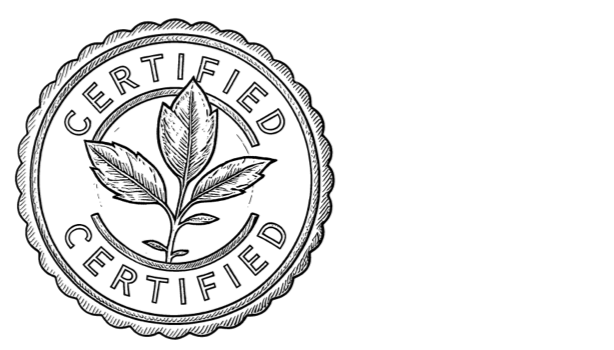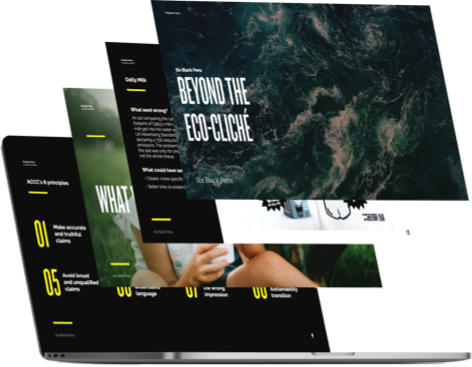3 creative principles to overcome
the greenwashing challenge.
the greenwashing challenge.
We’ve all seen those eco-clichéd ads – the unfeasibly green rainforests, the luxuriant blue skies, the landscapes dotted with wind turbines. Their very ubiquity renders any impact redundant. But here’s the thing: green can be good for business. As creative consultants Radley Yeldar say: “Done right, sustainability is a massive opportunity.”
Six Black Pens’ new insights presentation – Beyond the eco-cliché – looks at how aligning creative with credibility can help your brand deliver on its sustainability message.
As we see it, a big part of the problem is that while there’s plenty of discussion around what we can and can’t do regarding environmental claims – eight greenwashing rules from the ACCC alone – there’s very little discussion around creative expression; on the visual and written nuances that can be used to communicate these claims. That, to us, is just as important because it’s where the possibilities lie. The opportunities to create campaigns that truly resonate with your customers; that add kudos to your brand.

The genesis of our insights presentation
At Six Black Pens, we work with clients across the financial services, superannuation and healthcare industries for whom sustainability is a critical part of their corporate mission. So we’re often asked to create comms that reflect ‘green’ products or services. And that got us thinking. Because the more we investigated the ‘dos and don’ts’; the more we looked at the pitfalls of greenwashing, the clichéd communications and the ACCC’s principles, the more we realised that marketing professionals and brand guardians might be interested to hear about our approach to the subject. Our insights presentation – Beyond the eco-cliché – is where we landed. Here’s a taster.

Survey after survey shows millennials and post-millennials want sustainability. Businesses want it. Your customers, consumers and employees want it.”
Radley Yeldar, creative consultancy, UK
It’s the impression that counts
In the first part of our insights presentation, we review why greenwashing is bad for business and outline ‘What you need to know’ to avoid falling foul of the regulations. We examine some of the potential consequences from making exaggerated or untrue claims. Aside from the obvious – the reputational damage to a brand – there’s also the real prospect of facing serious financial penalties.
Many of you will be familiar with the ACCC’s eight principles, so alongside this, we also delve into some of its main greenwashing flags. Again, while some of it will be common sense – not overusing visual cliches and overdependency on words like ‘green’ and ‘eco-friendly’ – it’s also interesting to note that another common flag is the use of icons that look like third-party certification. It’s the muddying of the waters – whether deliberate or unintentional – that the ACCC is keen to stamp out.
Finally, we wrap up the first part of the presentation with a look at some brands that have fallen foul of regulators and consider the simple steps they could have taken to avoid this. If there’s one critical outtake from the rules around greenwashing, it’s this: it’s the impression that counts.

To comply with ACL (Australian Consumer Law), businesses need to ensure that they do not create a false or misleading impression in the mind of an ordinary and reasonable consumer.”
ACCC guidelines
Principles can drive bold creative
In the second part of our insights presentation, we outline ‘What you need to do’ to create meaningful, impactful creative in this environment. As we delved deeper into the subject it became apparent that, to achieve this, there were core principles to be adhered to. We landed on three. We expand on each of these three principles in detail in the presentation, looking at how sticking to these guidelines allows us to break free from the conformity straitjacket.

Ditch the eco-cliché
We examine how to get beyond clichéd language and overreliance on nature photography.

Be more
relatable
We look at how to be more relatable. For example, by being less abstract and staying close to your brand.

Be more
believable
We consider how to be more believable. For example, through the use of specific language and credible evidence.
By examining the ‘dos and don’ts’, and showing examples of brands that are already being effective in this space, we reveal not only how to stay within the ACCC’s guidelines, but also how to deliver distinctive creative that will help your brand effectively deliver on its sustainability messaging in a credible, believable, inspirational way.

Like to see the complete picture?
Contact us today to book a time for the full
Beyond the eco-cliché insights presentation.




